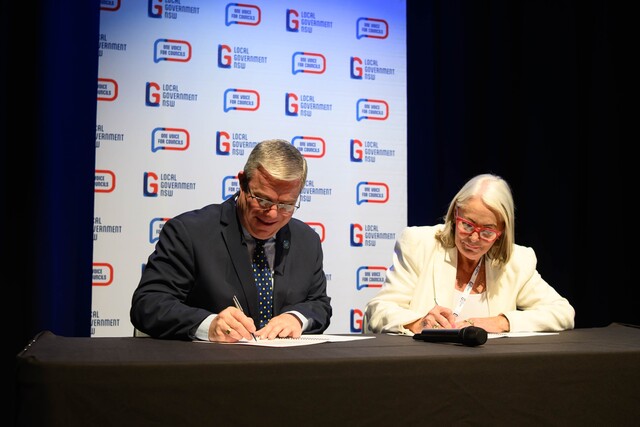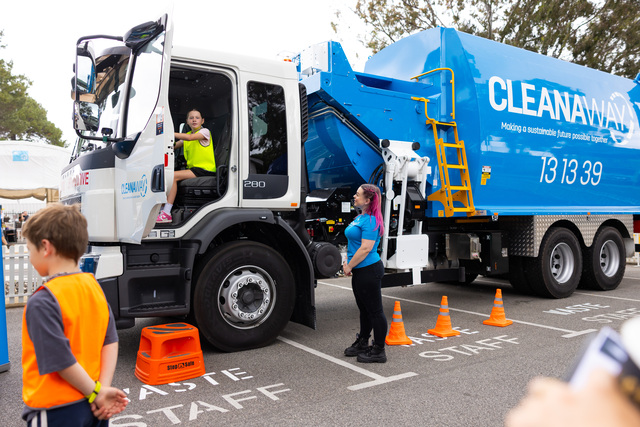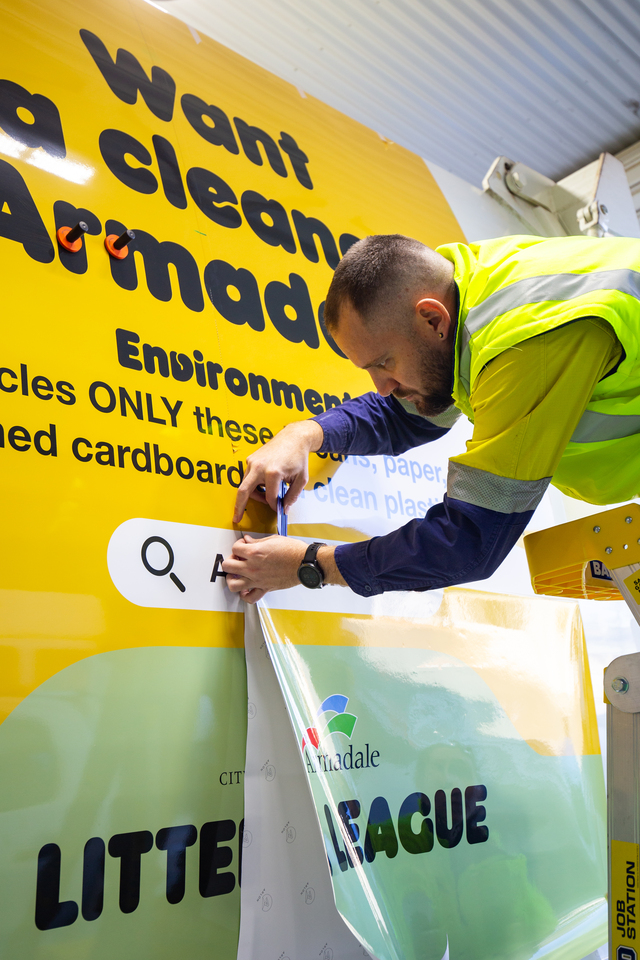In March, 54 of Victoria’s 78 Local Government areas elected their first Council. All but one Council have now returned to elected representation following Statewide amalgamations. Surf Coast Shire was one of the first Councils to return to democratic representation. It also had the shortest period under State appointed Commissioners, with just 12 months. Most Councils were without elected Councillors for closer to two years and sometimes longer. Elected in March 1995 and now two years on, Surf Coast’s Communications Coordinator, Jon Breedveld, spoke to three of the Shire’s Councillors about their impressions of elected representation post amalgamations and prepared the following report.
Cr Noel Bates, a newcomer to Local Government, was Mayor of Surf Coast Shire for the first two years of the elected Council’s initial term. Council’s representative to the Municipal Association of Victoria, he is also that body’s President.
Cr Julie Hansen is also a newcomer to Local Government. She is one of two women on Surf Coast Council and represents the coastal Anglesea Ward. Keenly interested in the planning and future of the Shire, Julie comes from a community development background. A pharmacist, she is in part time paid employment as well as being the mother of three children.
Cr Lindsay Schroeter represents Winchelsea, the largest Ward in the Shire. Previously a Winchelsea Shire employee and later, Councillor, he believes that looking after the little things is still an important part of the Councillor’s role. Cr Schroeter is also heavily involved in his local community.
Cr Bates said that the role of a Surf Coast Councillor has been made all the more challenging because the Shire was among the first three Municipalities to revert to elected representatives post amalgamation.
“We have been part of the spearhead and this means that Surf Coast has often had to be the first to provide elected Local Government while implementing the many changes brought about by amalgamations and new Victorian legislation,” he said.
“We have had to travel into uncharted waters. Other Councils and the State Government have observed with interest the responses developed by places like Surf Coast and Geelong. Often we have had no example to follow and for new Councillors carrying out functions different to those both they themselves and the community might have been used to, the demands of the job have been considerable”
Cr Bates said that he had started out thinking amalgamation was not a good thing, however he has mellowed his thinking during his two years as the Shire’s inaugural Mayor.
“I decided that if this was to be, then we should ensure the autonomy of local Councils was not eroded to be just an arm of the State Government. “I have tried to do this,” Cr Bates said.
“It is important that all Councillors strive to preserve the sanctity of Local Government. Ours is the most important level of government, as the direct interface with the community.”
He said that the role of the new Councils is to set strategic directions, determine policy and to ensure best practice. This means approving a budget, making local laws and fulfilling certain statutory obligations.
“Council is the board of directors, setting the parameters within which the Chief Executive Officer and his staff implement Council’s wishes,” he continued. “As well, Councillors continue to identify community needs, evaluating ideas and proposals so these can be reflected in the overall goals and plans of the Shire.
“If individual Councillors are the link between the ratepayer and the policy and strategic direction of the Municipality, then the role of the Mayor is that of the conduit between the Council and the officers who must see to it that things happen. The Mayor must work closely with the Chief Executive to translate policy and strategy into action.”
Despite some philosophical differences and the likelihood of being on opposite sides of the debate in the Council chamber, both Cr Hansen and Schroeter had some similar comments to make about their past two years as Councillors.
Each said a concern for the ratepayer motivated them to stand in March 1995.
Cr Hansen said that a Councillor serves the community in a way that reflects what the community wants now, and more importantly, in the future. She believes the community needs elected representatives who are working towards the same vision as it has.
“That is absolutely critical and that has been a driving force in me wanting to get on Council and in each decision that I make,” she explained. She is also concerned to make Councils more accessible to the community.
“I am trying to demystify the processes of Council. The feedback that I get is that the processes are not known in the community – that the Council organisation is still seen as an inaccessible place,” she said. “I think that it is an enormous mystery to many people. I am looking for ideas of how to communicate to people that they are empowered to claim it, they have to claim it.
“We are not serving the Council or the bureaucratic organisation. We are serving the community. When I bring myself back down to that – ‘Why am I here?’ – it makes my decision making much easier. It takes away all the wrapping paper and all of the sticky tape.”
Cr Schroeter said the role is about representing your ratepayers and fighting for their needs. “To satisfy people’s wants, being able to get something done for them, I find that satisfying,” Cr Schroeter explained. “I like helping people and that is what I try to do.”
The worst things about a Councillor’s life is also a point of general agreement for the two.
“Wasting time on trivial matters and focusing on individuals – personalities and not issues is a waste of time,” Cr Hansen explained.
Cr Schroeter referred to the ‘politicking’ and the personalities.
Cr Hansen took the issue further, expressing frustration at wasting time in meetings by not coming to the critical issue to make a decision.
“I suppose a frustration is that I thought it would be easier, be more clear, to work towards a goal in an unfettered, uncluttered, clear way,” she said. Part of this can be attributed to differing values. “I like risk taking and I find the conservatism frustrating,” she said. “It is a great challenge to work cooperatively with others, with a diverse range of backgrounds, views and opinions – who other people had obviously felt enough confidence in to elect. It has been a real challenge for me to accommodate those people because they are also our elected representatives.”
She feels it is important that Councillors spend time early in the term developing as a team to enable a clear focus to be maintained.
“Even though they may have different viewpoints it is important to maintain an ongoing relationship,” she said. “It is important to do a lot of building in your very early days so that you can agree to disagree – have a very healthy debate then, when you have made your decision, you can move on to the next decision and give it your best again and not be hung up on personalities. Focusing on the issue is very critical.”
Neither Cr Hansen or Cr Schroeter show any sign of waning enthusiasm for the job. While noting that the role is more involved than before amalgamation, because he now represents nearly 2,000 people scattered over 853 square kilometres of the 1,566 square kilometres of the Shire, Cr Schroeter does not feel the actual task has changed.
“People still want you to go and look at the corrugations in the road,” he said. “They still come to you when you are in the street and say there are branches overhanging in the main street and they want something done about it. Some Councillors think you only look at the big picture but there is a lot of little pictures you have to think about too – that is my opinion.”
Cr Hansen has a different view. “My main message to people who are thinking of standing as Councillors is if you enjoy focusing on strategic issues there is a real challenge for you here. Those skills are welcomed in the Council forum. There is a real opportunity to focus on working towards the future and the processes.”







